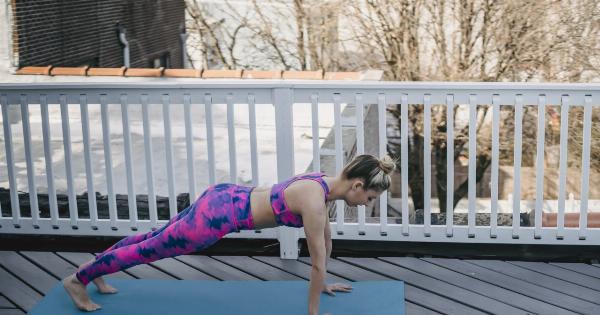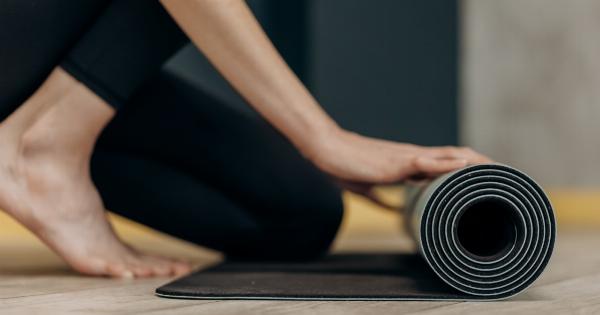Building a strong midsection is crucial for overall health and fitness. A strong core not only improves your posture and balance but also supports your back and aids in everyday movements.
Resistance bands are a great tool for working out your core muscles as they provide resistance throughout the movement, making the exercises more challenging. Here are some of the best resistance band exercises for a strong midsection:.
1. Standing Oblique Twist
Grab the resistance band from one end and stand with your feet shoulder-width apart. Hold the band at shoulder height, with your arms extended in front of you. Now twist your torso to the right, bringing the band towards your right hip.
Hold for a second, then return to the starting position. Repeat on the left side for one rep.
2. Plank with Resistance Band Row
Start in a plank position with the resistance band wrapped around your wrists. Keep your core engaged and your back straight. Now pull the resistance band towards your chest, keeping your elbows close to your body.
Release and repeat on the opposite side for one rep.
3. Seated Russian Twist
Sit on the floor with your legs extended in front of you. Wrap the resistance band around your feet and hold onto the band with both hands. Lean back slightly, engage your core, and twist your torso to the right, bringing the band towards your right hip.
Return to the starting position and repeat on the left side for one rep.
4. Resistance Band Bicycle Crunch
Lie on your back with the resistance band looped around your feet. Place your hands behind your head and lift your shoulders off the ground. Now bring your left elbow towards your right knee, extending the other leg. Alternate sides for one rep.
5. Resistance Band Leg Raise
Loop the resistance band around your ankles and lie on your back with your legs extended. Keep your core engaged and lift both legs towards the ceiling, then slowly lower them back down. Repeat for several reps.
6. Side Plank with Hip Dip
Start in a side plank position with the resistance band wrapped around your wrists. Lower your hip towards the ground, then lift it back up to the starting position. Repeat for a few reps, then switch sides.
7. Standing Knee Crunch
Wrap the resistance band around a sturdy object, such as a pole, and stand with your feet shoulder-width apart. Hold onto the band with both hands and lift your right knee towards your chest, bringing the band with you.
Hold for a second, then return to the starting position. Repeat on the left side for one rep.
8. Bear Plank Knee Crunch
Start in a bear plank position with the resistance band wrapped around your wrists. Bring your right knee towards your chest, bending at the knee. Release and repeat on the left side for one rep.
9. Lateral Band Walk
Wrap the resistance band around your ankles and assume a partial squat position. Step to the right, then bring your left foot towards your right foot. Repeat for several reps, then switch sides.
10. Knee Tuck with Resistance Band
Wrap the resistance band around a sturdy object, such as a pole, and lie on your back with your feet towards the band. Hold onto the band with both hands and lift your knees towards your chest, bringing the band with you.
Hold for a second, then slowly lower your feet back down to the starting position. Repeat for several reps.
By incorporating these resistance band exercises into your workout routine, you can strengthen your midsection and improve your overall fitness. Remember to engage your core muscles throughout the movements and maintain proper form for maximum results.




























